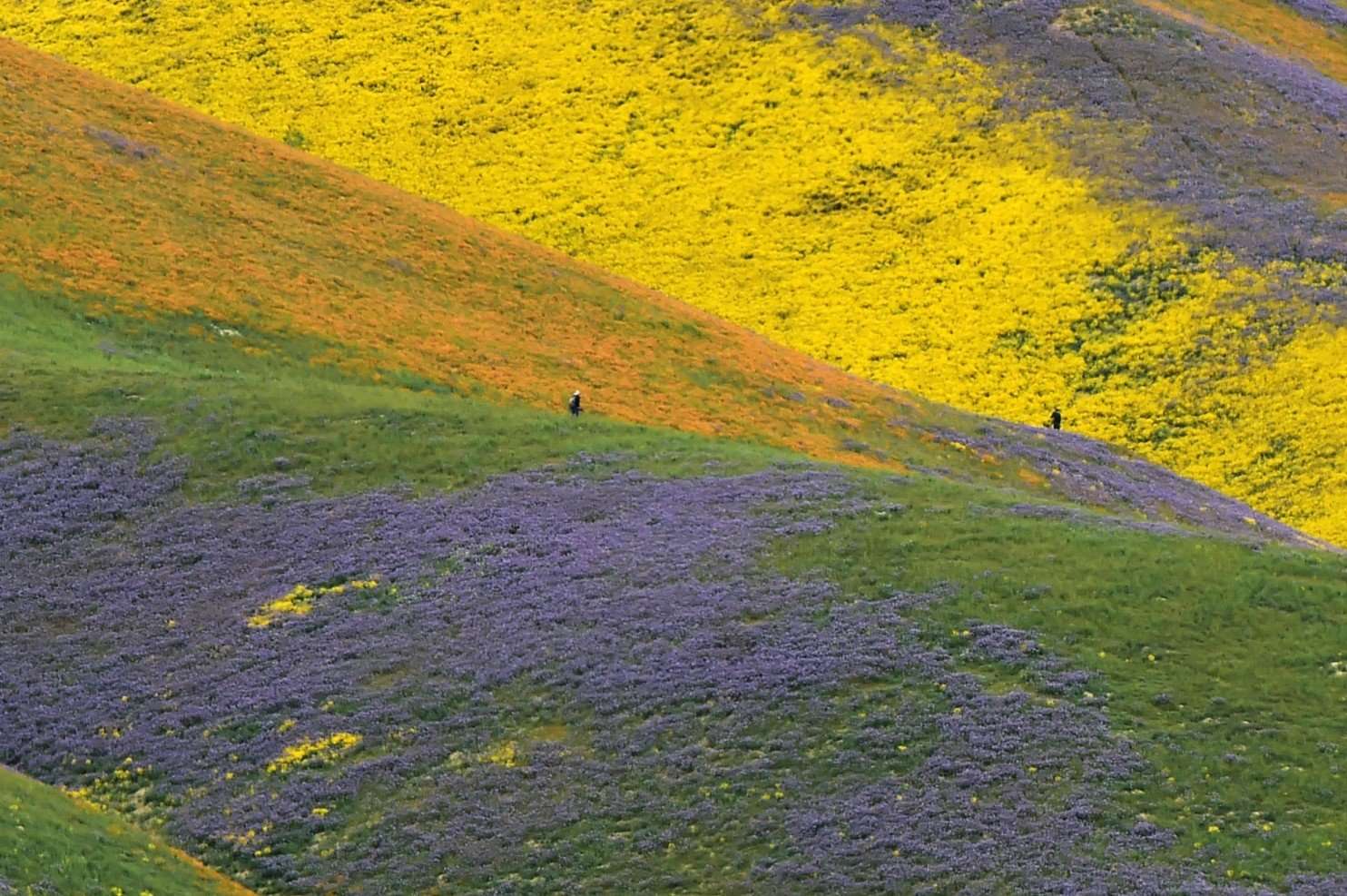As spring approaches, fields outside of Los Angeles debut a wildflower 'super bloom.' (The Washington Post)
A wildflower super bloom is underway in Southern California after nearly 10 inches of much-needed winter rain. For four years, the state has struggled with a serious drought that drained reservoirs and prompted water bans. But this year’s El Niño-like winter brought the rain and the wildflowers are taking a giant gulp.
The year-over-year change is so remarkable you can see it on satellite imagery. The photo above is what California looks like on the ground. Now here’s what it looks like from space.
California Poppy Reserve, then and now. (Planet Labs)
The California poppy is native to California and Mexico. It’s actually considered a weed by some people, because they can be overwhelming in good (read: rainy) weather. It’s small and it grows fairly close to the ground. Its stems grow to about 12 inches and the flower itself is no more than 2 to 3 inches across when it’s fully open.
It’s a particularly fun flower to watch throughout the day because it won’t open until the sun hits it. It looks like they wake up in sunny weather and sleep through the foggy days. At dusk, they curl up for the night.
The poppies in the reserve began to thin last week, but the park also said that if they get more rain, they expect a good bloom through early May. Unfortunately some of the thinning may have been from tourists trampling the flowers to get photos. Mashable has a really good feature story on the stampede.
Carrizo Plain National Monument, then and now. (Planet Labs)
This region of the southern Central Valley is booming with lupine, poppies, fiddleneck and baby blue eyes. The National Monument is run by the Bureau of Land Management, and it offers trails, park grounds and camping. On the north end of the park, Soda Lake was a field of dirt last year. Now it’s filled with water again.
People in the know say that if you want to see the flowers at Carrizo, you should go now. If the weather turns hot and dry, the blossoms will fade quickly.
Los Padres National Forest, then and now. (Planet Labs)
West of Carrizo Plain, the Los Padres National Forest is booming. Interestingly, the forest officials noted on March 30 that they may have had too much rain for some varieties, including California poppies and lupine, which tend to thrive in slightly drier environments.
Bitter Creek National Wildlife Refuge, then and now. (Planet Labs)
The refuge is not open to the public, because wildlife are trying to, well, take refuge from humans. But you can still view the hillsides and get photos from Hudson Ranch Road, which runs through the middle of the refuge. You can only hike into the refuge by taking a guided tour with a staff member.

YoodleDudle on April 14th, 2017 at 07:09 UTC »
I wonder how gorgeous these types of views would have been to some of the first settlers and frontiersmen who managed to scale the seirra nevadas. Most have been breathtaking.
brad-n on April 14th, 2017 at 06:18 UTC »
We talked about this last week in my ecology class. Then on Monday our professor updated is with a story about how areas have been closed because too many people were trampling the flowers to take photos.
EDIT: This is mentioned in the article. Heh.
Securitybob on April 14th, 2017 at 06:15 UTC »
Hope this helps our bees